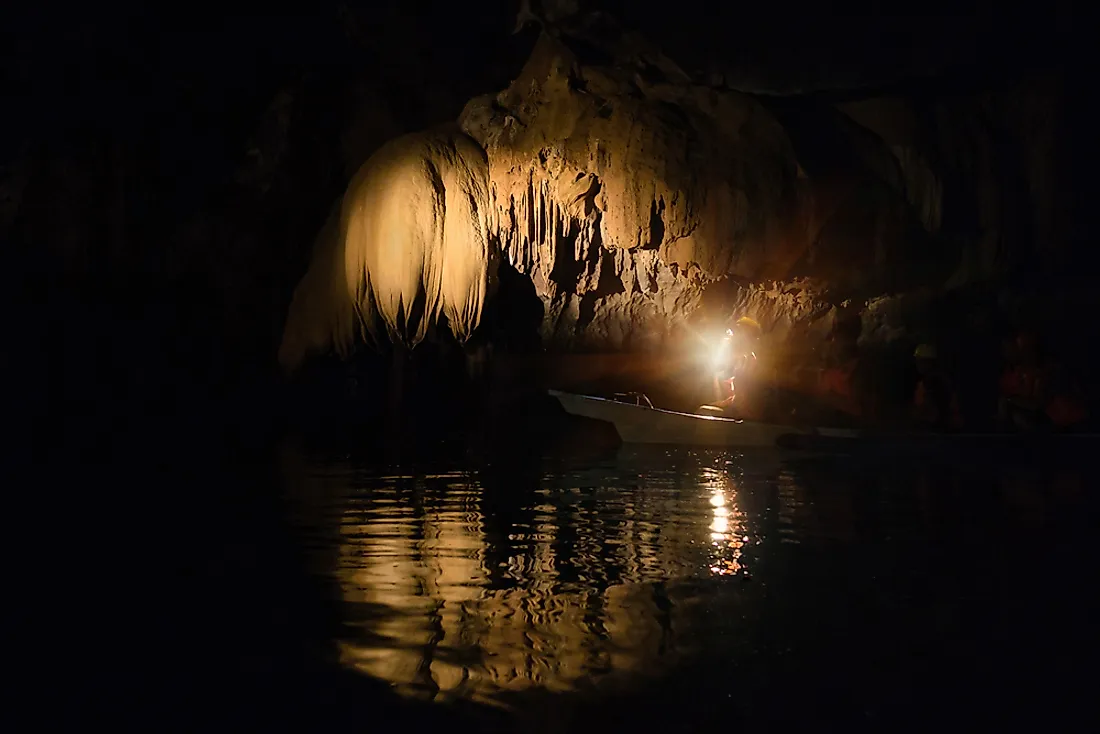The Longest Underground River in the World

Sistema Sac Actun is a subterranean river that is the world’s longest underground river, with a length covering 95 miles. “Sac Actun” is a Yucatec Mayan word that translates to “white cave.” The subterranean river is found in Quintana Roo, Mexico. The underground river was established as the longest in the world in 2007, a title that was previously held by the Philippines’ Puerto Princesa Subterranean River. The underground river is found in a subterranean cave system, the similarly named Sac Actun cave system, which is the longest of its kind in Mexico, whose length of 198 miles is only surpassed by the 400-mile long Mammoth Cave System in the United States. However, a discovery made in 2018 showed that the Sac Actun cave system is connected to the neighboring Dos Ojos cave system. The link between the two cave systems makes the combined system the longest in the world.
Cenotes
The subterranean river is accessed through sinkholes found on the surface, which are known as cenotes. The San Actun cave system is home to over 150 such sinkholes. These cenotes, some being hundreds of feet in depth, were critical religious sites for ancient Mayans who carried out religious rituals around the cenotes. A notable example is the “Cenote Sagrado” (sacred cenote), a sinkhole located in Chichen Itza that is an important archeological site. Professional divers from the Global Underwater Explorers discovered the skeletal remains of a prehistoric human 141 feet beneath the underground cave system. The skull was established to belong to a teenage girl known as “Naia,” and was the earliest proof of human settlement in the Yucatan region. Another interesting discovery made by the team of divers was that of the remains of a mastodon, a prehistoric relative of the elephant.
Formation
Like many subterranean features found in the Yucatan Peninsula, the Sac Actun was formed as a result of the long-term dissolution of the limestone rock the region is well-endowed. Over thousands of years, acidic rain falling on the rocks gradually dissolved the limestone rock, forming the impressive underground cavities which are later filled with fresh water sourced from the rain. The reaction of water on the limestone rock is a continuous process, which means that the underground river could be increased in size. The roof of the subterranean river features protrusions known as stalactites while stalagmites are formed from below and these features are formed by the slow accumulation of calcium carbonate, deposited by dripping calcium-laden water from the surface.
Water Pollution
One pertinent issue facing the cave system on the Yucatan Peninsula is the increase in tourist numbers, which despite being directly proportionate to the amount of revenue, is in itself a direct and indirect threat to the cave systems. Huge amounts of water from the cave system are being extracted for tourist use, at a rate almost surpassing that used by the cave system to replenish itself. Water pollution from tourist amenities including fertilizer runoffs from golf courses is bound to affect the quality of water in the underground river. The polluted water could then contaminate other cave systems, and even spread the pollutants to the sea.











